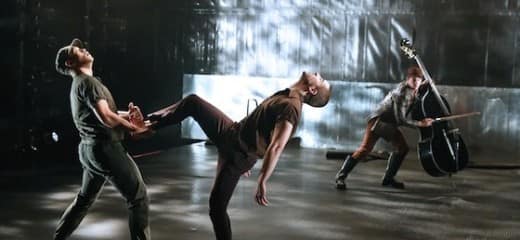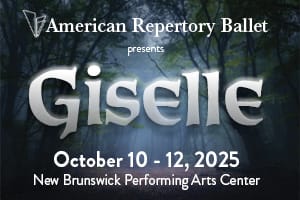We met opening night.
I sat, curious. A stranger. Sensed the cavern of your stage. Deep and bare.
You were pregnant with an aching stillness
With the yearning of a deserted canyon.
The lighting, dim. Chandeliers dangled quiet and reflective.
My pupils tried to release from their habitual high.
The neon glare of the newly installed WILMA AURORA
Refracting off the NEW WHITE SLEEK SLICK café,
Their last hit.
Nothing bright to settle on in here.
You touched me deeply and instantaneously.
As if I had been in a plane, but didn’t realize.
I had ice water, and peanuts, and television after all.
You didn’t even say hello.
You came over, and in one fluid motion, opened up a hatch beneath my feet.
I nearly fell through.
The wind roared at my heels.
Nausea and adrenaline devoured me.
You closed the hatch.
And the play started.
That’s how it felt.
To meet you.
I will never forget it.
…
No doubt, the Wilma’s production of Lorca’s Blood Wedding (now closed) is a feat. The prowess and commitment of the ensemble to Csaba Horváth’s direction take center stage (second, I would say, to Lorca’s play). I watch as I might a tennis match or football game—in awe of the physical challenge met by corresponding virtuosity. Ensemble members fluidly clamber on each other’s backs to climb a towering back wall. They play instruments without hesitation: Sarah Gliko cries out on saxophone, Matteo Scammell rouses with guitar, Ross Beschler grinds on a black bass. The ensemble pools a wild coordination to stomp out the interlocking rhythms of riffs on flamenco and Hungarian folk dance. In this world, action happens at a subterranean level anchored in the body.
In other words, the bedrock style feels rigorous and complete. It’s certainly worthy of note amidst other regional theater work, which is typically built on a three-week rehearsal period. Horváth, a Hungarian choreographer and director, has been working with the Wilma’s HotHouse ensemble for over a year, off and on. That dedicated time is palpable. Horváth’s style comes through the actors’ bodies, as opposed to being superimposed—evidence that he imparted it fully to the ensemble. They, in turn, do a miraculous job of taking it on. And hallelujah, praise these actors for not making me cringe when they dance. Mostly from a theatrical background, the ensemble survives crossing the stupid-but-too-often-true theatre/dance divide and manage both clear speech and clear movement.
Wrought, then, becomes a useful word to describe Horváth’s physical world—gesture drawing Lorca’s text taut, creating a palpable sensation of heaviness and claustrophobia. Characters take their stances toward it—the father (Ed Swidey) pushes against with dreams of acquisition, the Bridegroom (Jered McLenigan) wiggles away toward simple joys, the Mother of the Bridegroom (Jaylene Clark Owens) warns and worries. Their bodies create a sense of enclosing dread—a weight that becomes too heavy without counter.
At the heart of Lorca’s Blood Wedding is a love story. Not between the Bride and her Bridegroom, but between the Bride (Campbell O’Hare) and Leonardo (Lindsay Smiling), her “ex-lover,” who shows up the night before her wedding. On the night of the nuptials, they run away together. In this production, it’s clear from the repercussions they ought not to, but it’s not clear why they feel they have to.
Mid-chase scene, as Smiling and O’Hare clamber through a forest created by white chairs, it hits me:
the play plays,
the actors sweat,
images continue to flower—
Beschler as the moon, clad in a silver suit, slivers through the space,
cutting an eerie wake—
the ticking clock of a black bass rocking back and forth—
I’m not there. My gut, I mean.
I’m not with you, Blood Wedding.
Not with you like I was.
I want to be, but I’m not.
Those two lovers? Hesitation sits in their pelvises. Maybe I’m crazy, but there’s no way they’re fucking each other, right? There’s no pull there. Push? Sure. Their bodies ache with resistance: the bride’s spasms, Leonardo’s hold. But in a show written by Lorca, devotee of duende, in a show where I’ve been taught to read body, in a show that hinges on this very betrayal of the lover’s bodies, the lack of choreographic or energetic fire between them, be it choice or oversight, leaves me … confused. I don’t need their connection to be central, rom-com style, or even narratively, but I want to feel its force—alive enough to break the rigidity of the social rules. I want to feel the fissure, the leak, through which everything bleeds.
Do you remember when we met?
How you reached my nausea? Down layers deep into the bowl of my pelvis, my vagina and my psoas. The part of my body that remembers the unspeakable—trauma, love, connection, lineage.
What happened? From that point on.
I felt some incessant drive in you to impress or prove or pound.
Your effort, your work, your voracious hunger—all beautiful.
Maybe we just want different things.
I don’t feel betrayed. Or angry. Or bitter.
But for the heart to bleed, you have to let it beat.
Blood Wedding, Wilma Theater, October 25 – November 19, https://www.wilmatheater.org/production/blood-wedding






